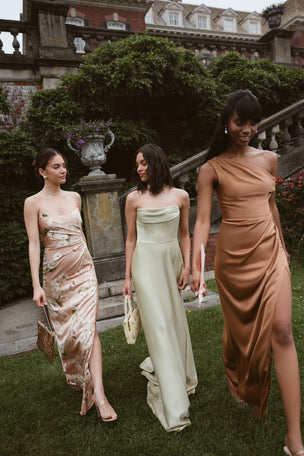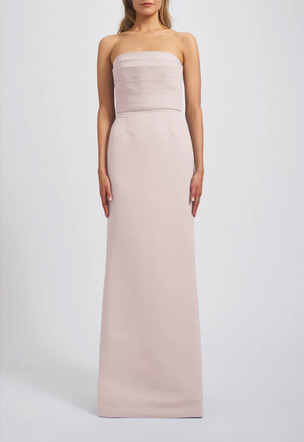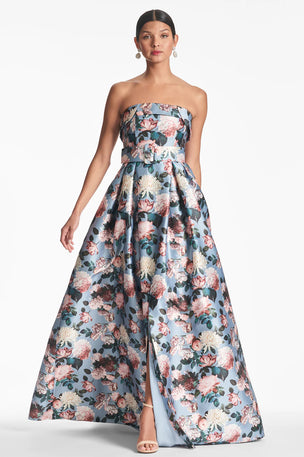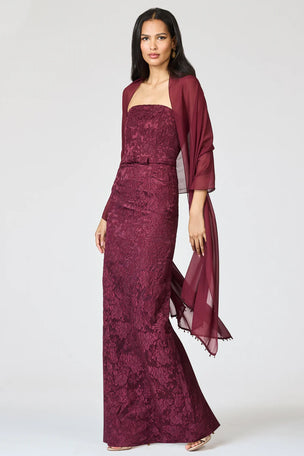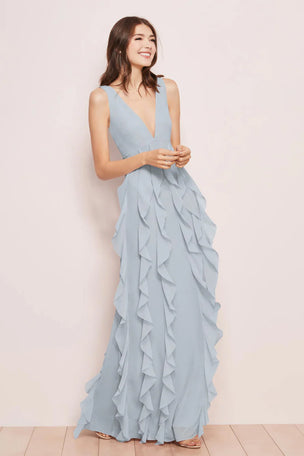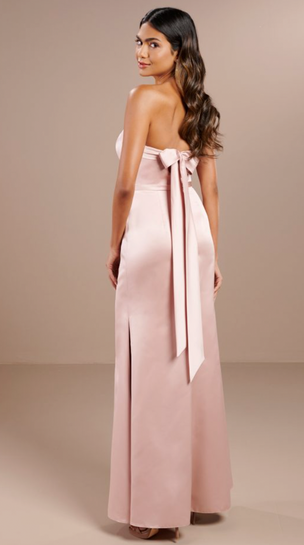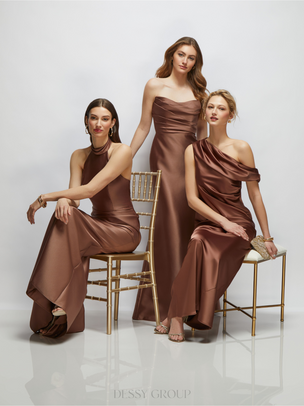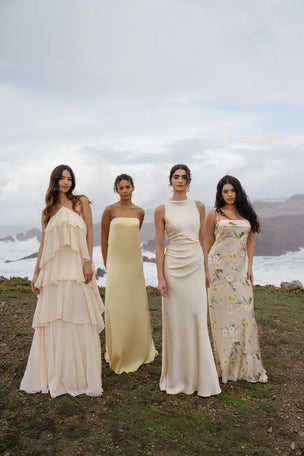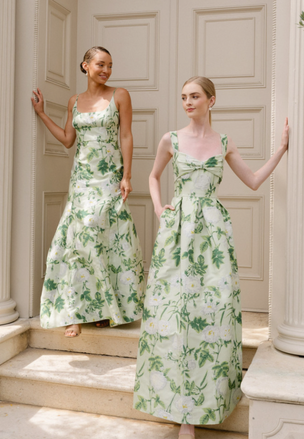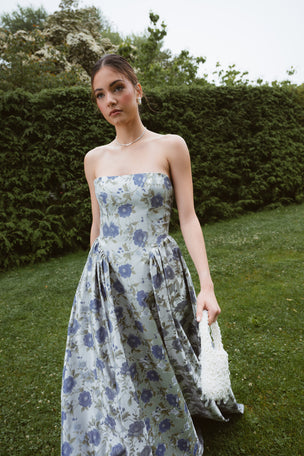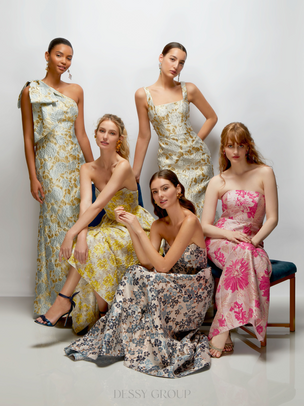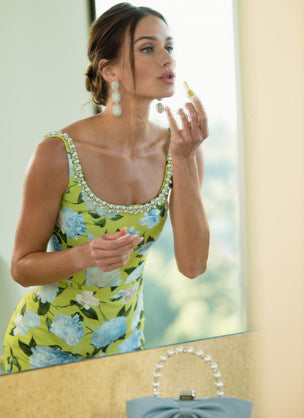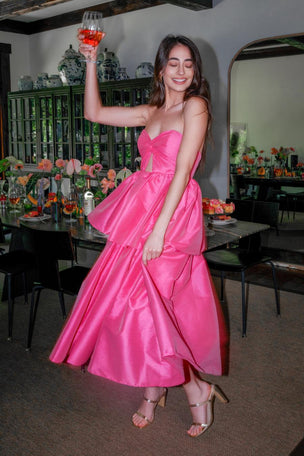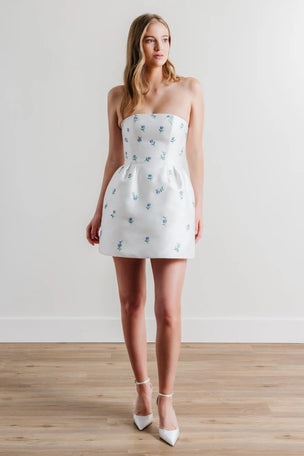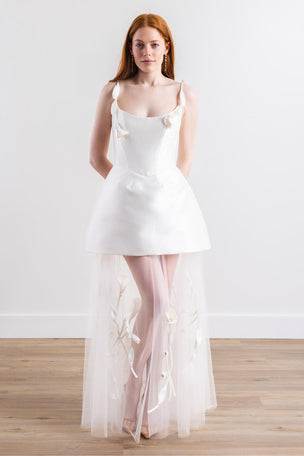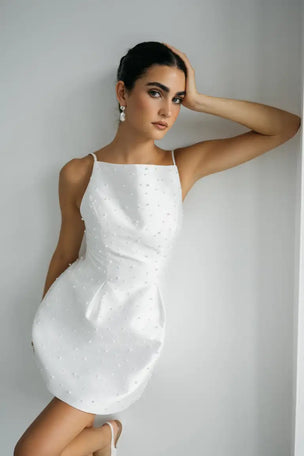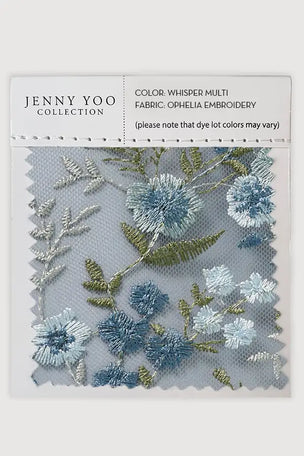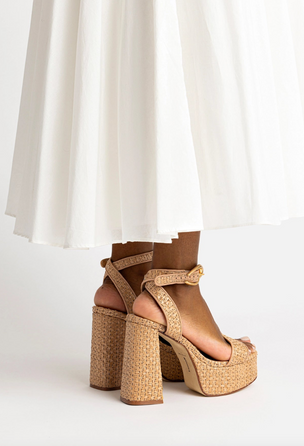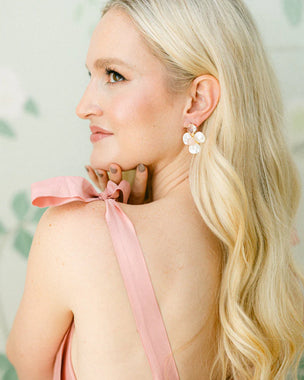Planning a wedding is sort of like opening a one-night-only art exhibit. It takes blood, sweat, tears, laughter, and Band-Aids to get one off the ground.
Couples throw their hearts into planning, and they want their big night to be well-received by the critics.
So when those invitations whoosh their way into your guests’ mailboxes, your exhibit of love has made its debut!

Think of wedding invitations like Easter eggs — the intangible kind that Taylor Swift drops for us in interviews about forthcoming music.
From the stationery to the calligraphy, you have the opportunity to leave little hints and lay the groundwork for your wedding vibe.
Let’s start at the beginning: addressing the wedding invites.
Not sure how specific to be?
We’re here to take the guesswork out and tell you how to address wedding invitations to every Tom, Jack, and Harriet on that guest list of yours.
Have you sent your save-the-dates? Learn When to Send Save-the-Dates [+ Proper Etiquette]!
The Married Couple
If you’re inviting a married couple that has the same name, this one is a no-brainer.
Address the envelope to:
Mr. and Mrs. John Smith
But what if the married duo uses two different last names?
That’s where it gets a little tricky.
For a married couple with two different last names, list them both. Make sure to list the woman’s name first and the husband’s name afterward.
Also include their first names, like this:
Ms. Jane Doe and Mr. John Smith

Photo: Deer Pearl Flowers
The Unmarried Couple That Lives Together
Writing the couple’s name on the same line suggests that they’re a joint pair. But if they’re not married, it’s best to put each person’s name on separate lines:
Ms. Jane Doe
Mr. John Smith
Again, it’s traditional to list the woman’s name first.
If they’re a same-sex couple, you can write the name of the person you are closest to first.
If that feels a little too “MySpace Top 8”, you can list them in alphabetical order.
Either way is acceptable!
Related: Read Your Full Guide to Wedding Guest Plus One Etiquette
The Family With Children
Traditional wedding invitations include an inside and an outside envelope. In most cases, both envelopes include the same names.
Families with children are an exception to this rule:
For a family with kids under the age of 18, the outer envelope should only list the parents’ names. You can include the children’s names on the inside. If there is more than one child, list their names in order from oldest to youngest.
If you’re inviting a family with children over the age of 18, don’t list them on their parents’ invitation. Instead, send each adult child a separate invite. If those kids live away at college or have their own apartments, send an invitation to their place.
And send a personal invitation to any child who happens to be in your wedding, no matter their age.
The only thing that’ll make your niece more excited about being the flower girl in your wedding is receiving her own invitation in the mail.
Still haven’t found bridesmaids dresses? Shop the Bella Bridesmaids Collection now!
An Unmarried Guest With a Significant Other
Now here’s where addressing invitations gets a little bit tricky.
Just because a couple isn’t married or living together doesn’t mean that they’re not a real couple.
For example, if you have a male friend who’s been dating the same girl seriously for a year or two, address the invitation to both of them. If you know the girlfriend, it’s even more important to get this right.
You can even list her name first to help her feel extra welcomed:
Ms. Jane Doe
Mr. John Smith
Related: How to Write Bridesmaid Proposal Cards
But what if your friend has only been dating someone for a few months? Or what if they’re dating someone who you’ve never met?
In these cases, address the invitation to your friend only and allow them to bring the guest of their choice. Address the envelope as follows:
Mr. John Smith and Guest
If they’ve been dating for more than six months, invite them as a pair. Even if you’ve never met John’s significant other, there’s a good chance she likes all your posts on Instagram. Include her name on the invitation!
When someone has a serious partner who they’ve been dating for a while, it’s an insult to exclude that person’s name. And the longer they’ve been together, the more insulting it will be.
If you want that couple to attend your wedding, address their invitation like this:
Mr. John Smith and Ms. Jane Doe
Leaving the partner out is a seemingly innocent mistake, but it can definitely affect them. A little extra attention goes a long way to making your guests feel valued and special.
Guests With Special Titles

Photo: Style Me Pretty
Is your social circle filled with doctors, judges, and members of the military?
You should know how to address invitations to those with special titles and rankings.
If you’re inviting a judge and their spouse, include “The Honorable” and list the judge’s name first, regardless of whether it’s a man or a woman:
The Honorable Jane Smith and Mr. John Smith
Inviting a member of the military? Use their title and include their branch of service:
Lieutenant John Smith, U.S. Army and Mrs. John Smith
Have a few doctors in your family? Here’s what you need to know:
If the husband is a doctor:
Doctor and Mrs. John Smith
If the wife is a doctor and uses her maiden name as her professional name, list her first but include her married name:
Doctor Jane Smith and Mr. John Smith
If the wife is a doctor and uses her married name:
Doctor Jane and Mr. Smith
If both people are doctors:
The Doctors Smith
If both people are military personnel or have distinguished titles, write the name of the person with the highest-ranking title first.
What About the Inside Envelopes?

Photo: 100 Layer Cake
When it comes to the inside envelopes, you have a bit more flexibility. You can write the couples’ full name or take a more modern approach and just write their first names.
For example:
Mr. and Mrs. Smith
OR
John and Jane
If you’re inviting someone with a plus one, the inside envelope should read:
Mr. Smith and Guest
OR
John and Guest
The only exception here is if one or both people have a professional title. In that case, the inner envelope should read:
Dr. Smith and Mr. Smith
OR
The Doctors Smith
Conclusion
Creating a guest list and deciding who you invite to your wedding is very important and, let’s admit, a bit stressful. But how you address their invitations is just as meaningful!
Take the time to ask for the names (and the correct spellings) of significant others.
If you intend to invite children, include each child’s name on the inside envelope. Leaving someone out suggests that they’re not invited.
And last but not least, double-check the spelling of every name before you print those envelopes. We grammar snobs will appreciate your effort!
Hopefully, these tips will relieve some unnecessary stress and help you crack the code on invitation etiquette. Now get out there and get started so you can unveil your project of love. The critics are going to adore it!
For more updates and articles, follow us on Facebook, Instagram, and Pinterest.

